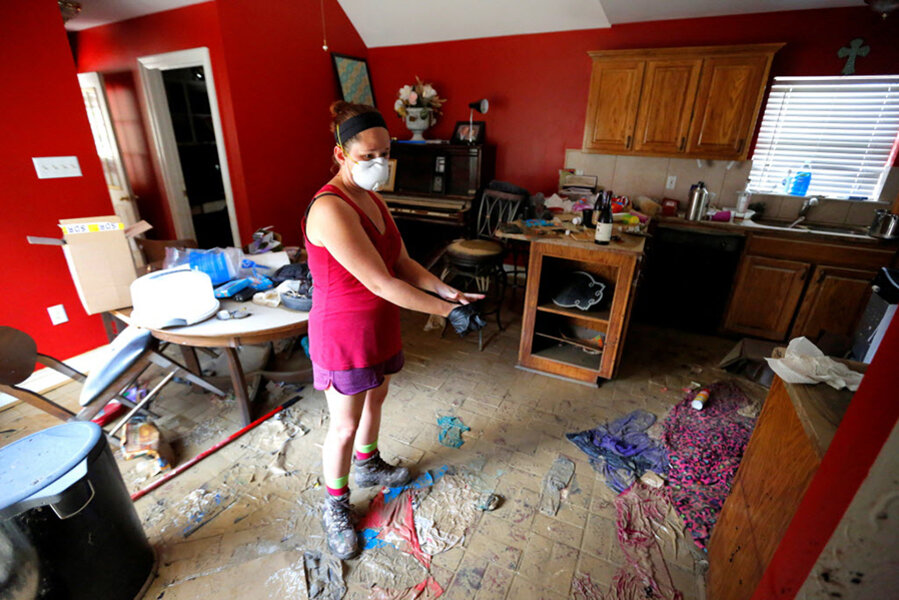In flood-ravaged Louisiana, new challenges for rescuers, residents
Loading...
The floodwaters caused by record rainfall have begun to recede in some parts of Louisiana, but residents and rescuers are now turning to a new challenge – how to help the region recover.
Officials have called it some of the worst flooding in the state’s history, saying at least 40,000 homes were damaged and 11 people were killed. More than 30,000 people have been rescued since last Friday, the Associated Press reports.
While concerns remain for areas south of Baton Rouge as the flooding heads downstream toward the Gulf of Mexico, rescue efforts have increasingly focused on ensuring residents have supplies of food and water and helping them clear out their flood-damaged homes.
“We’re tired but today’s a good day,” Lori Steele, a spokeswoman for the Livingston Parish Sheriff’s Office told CBS News. The rescue efforts going on now are less of a “life-saving nature,” she said.
But with that comes a daunting task. On Tuesday, more than two dozen volunteers helped Baton Rouge resident Rhonda Brewer pull water-damaged belonging to the curb, the AP reports.
Donning surgical masks, they ripped out soggy carpets, sheet rock and insulation, working to remove it before mold set in. In some houses, volunteers cleared out spiders and cockroaches that had come up through the sewer grates.
“The water was waist deep, so it's iffy if I can take the sheet rock and insulation half way or have to go to the ceiling,” Ms. Brewer told the AP. "If we don't make it in time, we trash it."
For a region more accustomed to hurricanes, the slow-moving, low-pressure weather system that dumped more than 20 inches in some parts of Louisiana presented a variety of challenges. Some climatologists have described it as like a hurricane without the high winds.
Many residents lived in areas that aren’t designated as flood zones. Because they weren’t in high-risk areas, they weren’t required to carry flood insurance by mortgage lenders, leaving them to rely on their own savings and federal disaster relief as they struggle to repair the damage.
“It had never flooded before,” Judy McGehee told the AP of her house house in Prairieville, La. '
As she waited with her partner Floyd Melancon at a makeshift Red Cross Shelter in Gonzales after being evacuated, they still had yet to learn how much water damage the house had received.
It was up to the yard in a picture sent by a neighbor, Mr. Melancon said, but the couple – who doesn’t have flood insurance – wondered if the water had risen since then.
Jim Donelon, the state’s insurance commissioner, said in Baton Rouge only 12 percent of residents are covered by flood insurance and 14 percent in Lafayette, numbers he called “shocking.”
The numbers of people who may still be stranded and in need of rescue is also unclear, Mike Steele, a spokesman for Gov. John Bel Edwards’ Office of Homeland Security and Emergency Preparedness told the Washington Post.
“It’s changing every minute,” he said.
About 60,000 people have signed up so far for assistance from the Federal Emergency Management Agency, while 20 parishes were included in the federal disaster declaration, according to the AP.
Parishes with heavy damage imposed a curfew to keep streets clear at night, and officials urged residents to avoid neighborhoods still filled to hip level with muddy water, the Post reports.
For those who did return, the impact could be devastating.
David Key used a small boat to get to his house in Prairieville, finding it had taken on five inches of “muddy, nasty, bayou water,” There were fish and thousands of spiders and mold has started to grow.
“I’m not going to lie, I cried uncontrollably,” he told the AP. “But you have to push forward and make it through. Like everybody says, you still have your family.”
Governor Edwards praised the efforts of rescuers, saying the flooding presented “tremendous challenges for everyone.”
“I’m very proud of the effort that we’re making,” he said at a press conference Tuesday, CBS reports. “More than anything else, I’m proud that Louisianians are taking care of their own and people are being neighbors to one another."





